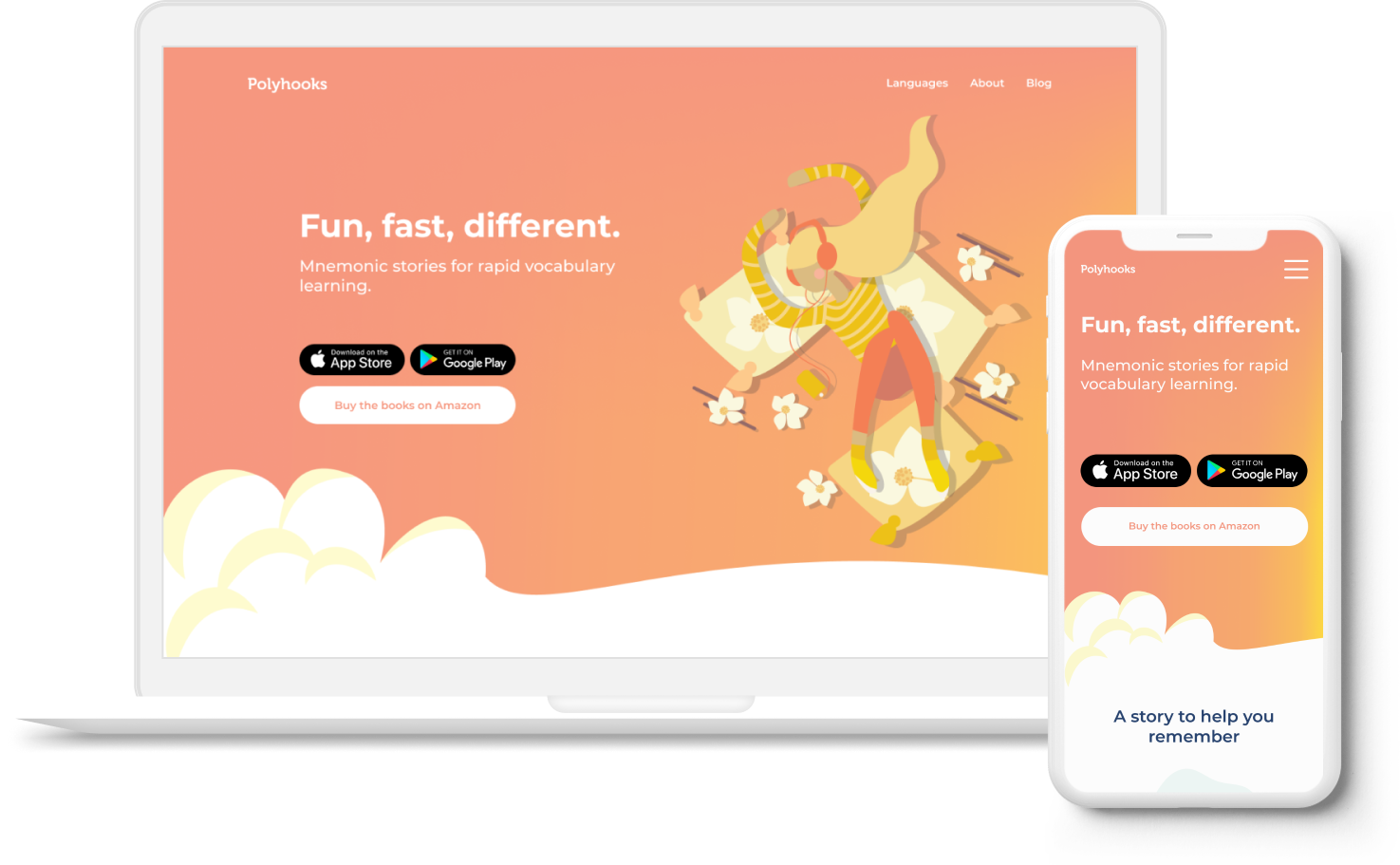
How to convince customers you’re different in a crowded market.
A fresh and engergetic brand for a new take on language learning.


How to convince customers you’re different in a crowded market.
A fresh and engergetic brand for a new take on language learning.
Polyhooks is a new company offering a novel way to learn foreign language vocabulary. It uses mnemonic stories to help learners connect with and remember vocabulary words.
Polyhooks was releasing an illustrated book series in multiple languages and planning to build an app. They needed cohesive branding and a responsive website to market their products.
This case study explains how I developed the Polyhooks digital branding and designed their responsive marketing page.
I analyzed the marketing platforms of some of the biggest language apps out there.






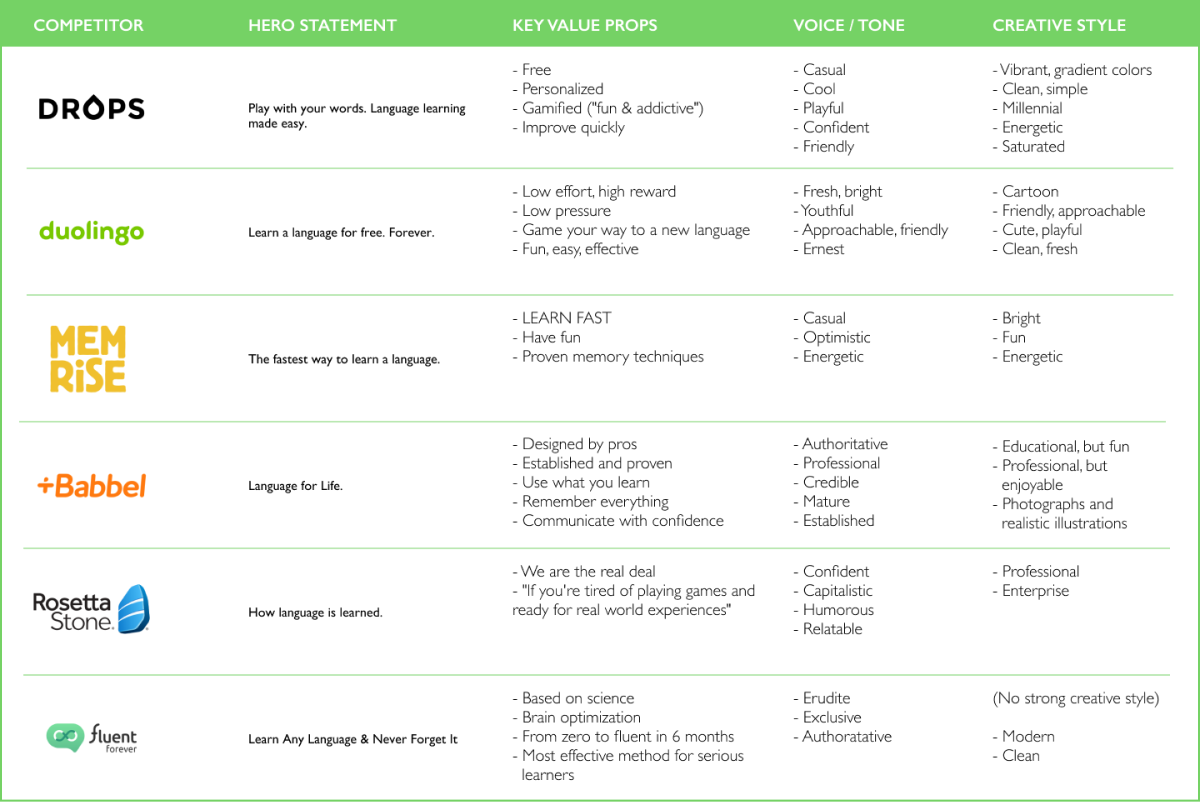
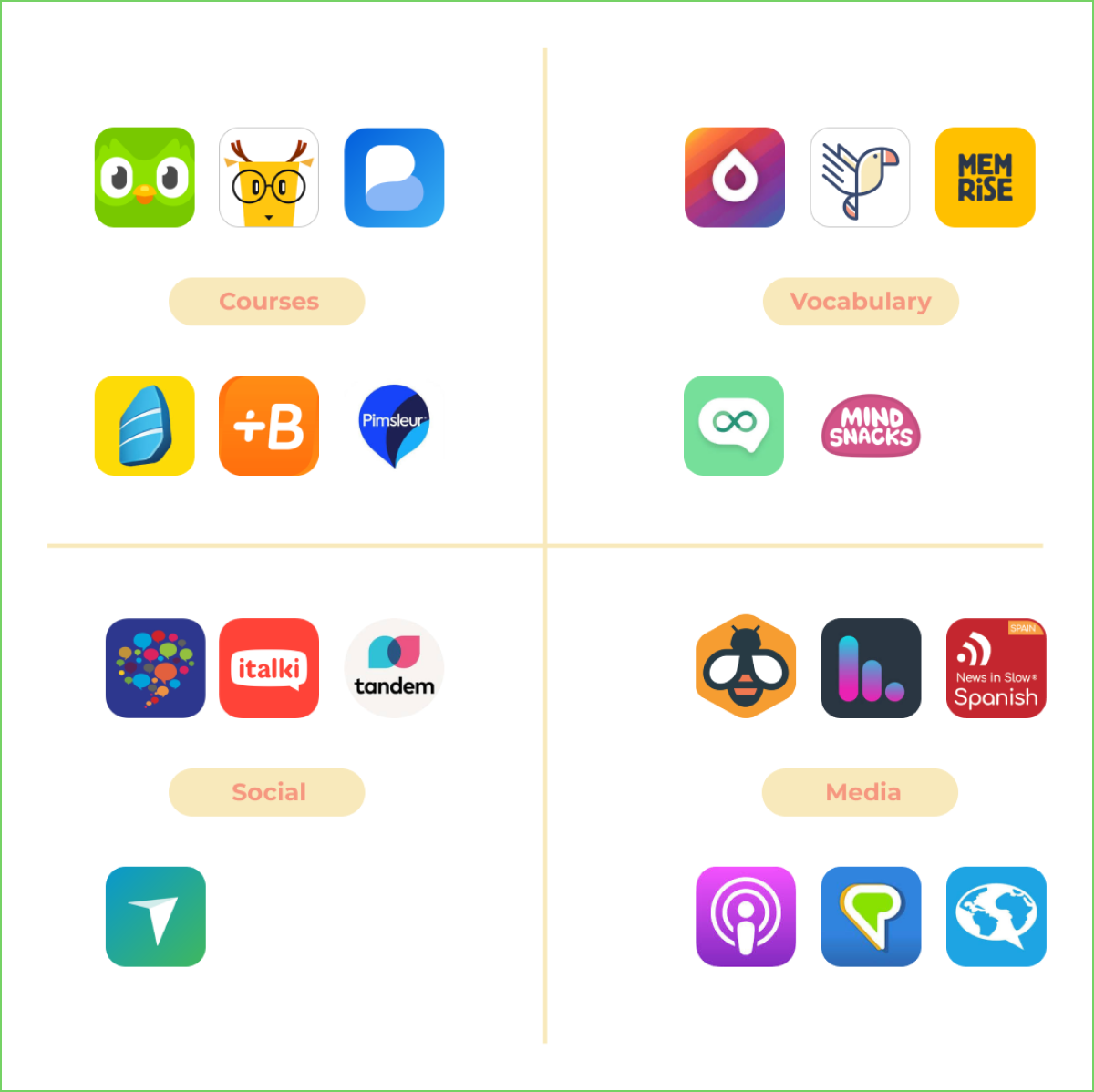
As an American living in Brazil, I had a very compelling reason to learn Portuguese. My study efforts now look very different from when I flirted with Duolingo to try to keep up my Spanish.
I wanted to talk to a broad spectrum of learners to understand their motivations, habits, and challenges. After listening to the experiences of 7 people, here’s what I learned:
Based on the research I recognized several user personas.
Since Polyhooks was a beginner program offering fun, easy, vocabulary building, I focused on personas that valued higher vocab and cultural learning goals, with lower fluency and grammar goals:
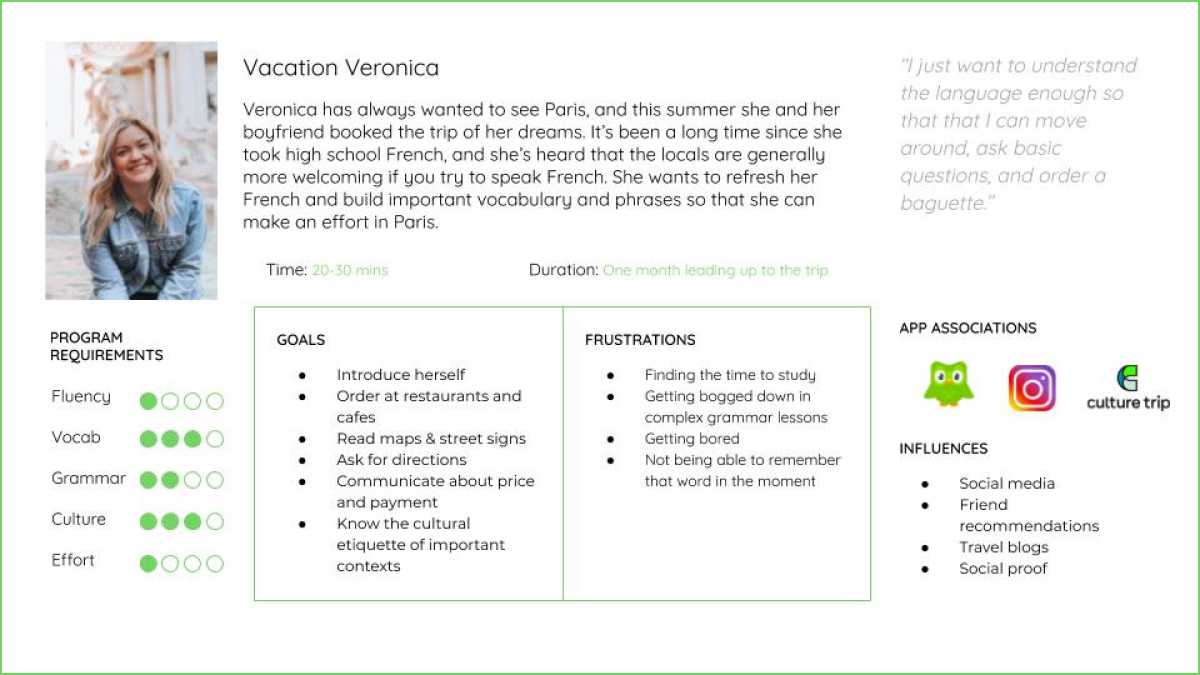
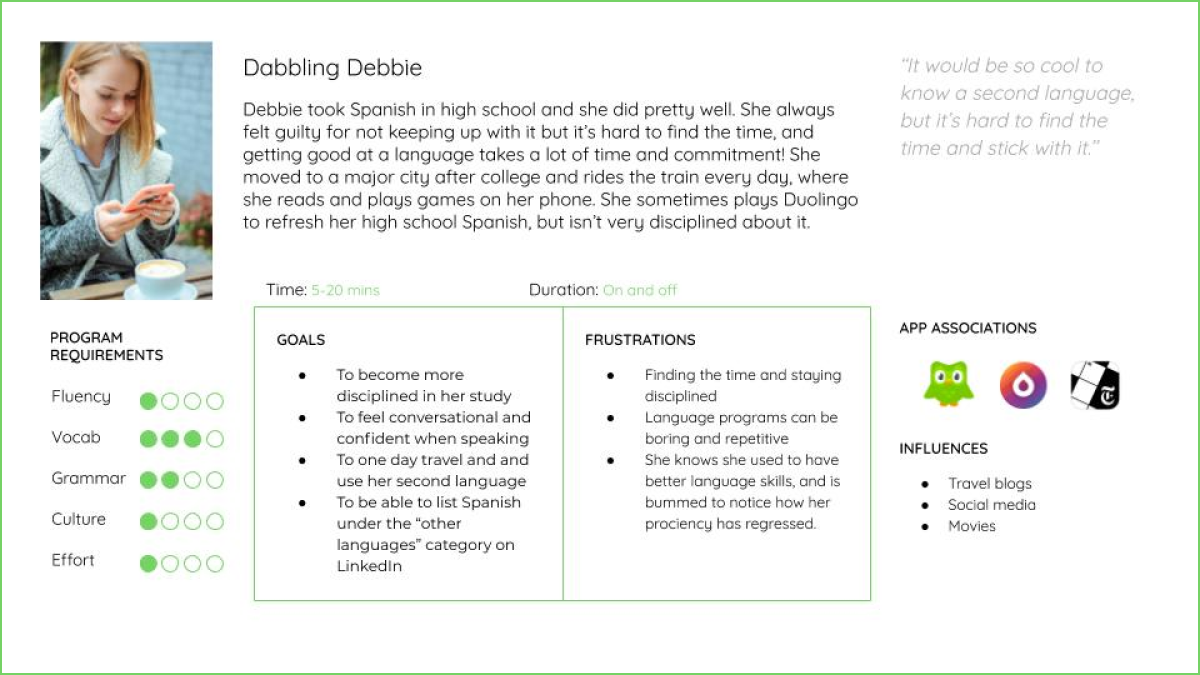
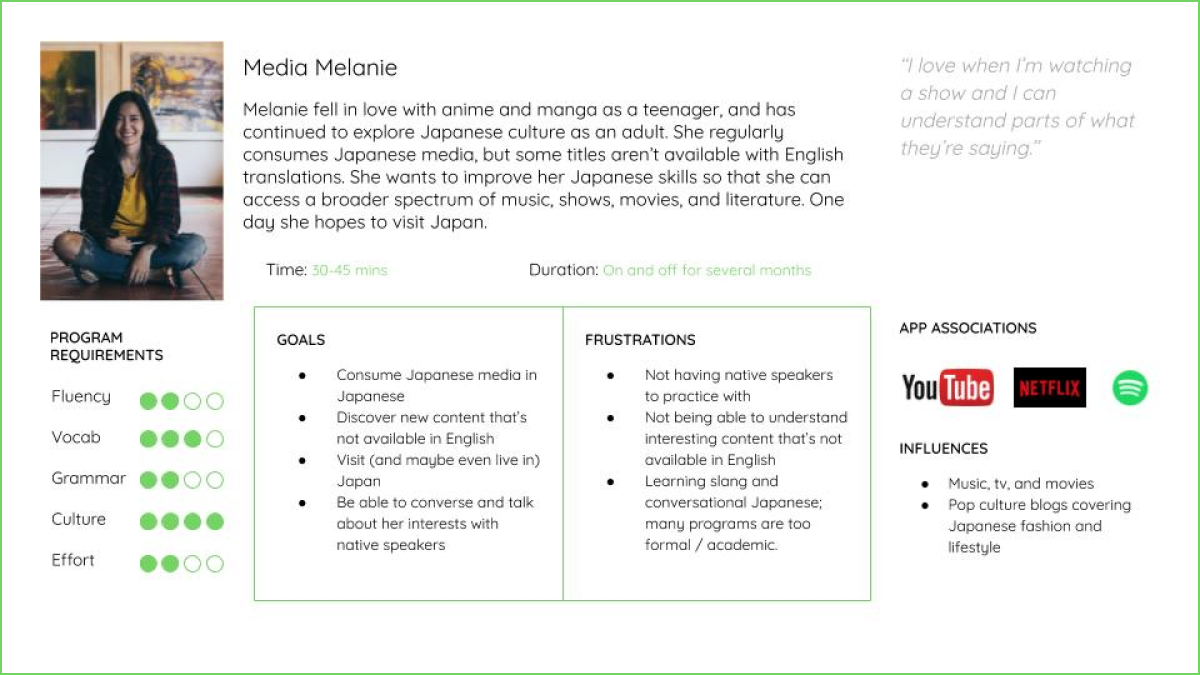
After interviewing the founder I synthesized a framework for the Polyhooks brand. I focused on defining users, problem, and solution:
A major part of my product research was diving into the Polyhooks book.
I read the book with the goal of building my knowledge of the Polyhooks product and gathering datapoints around its personality and brand identity.
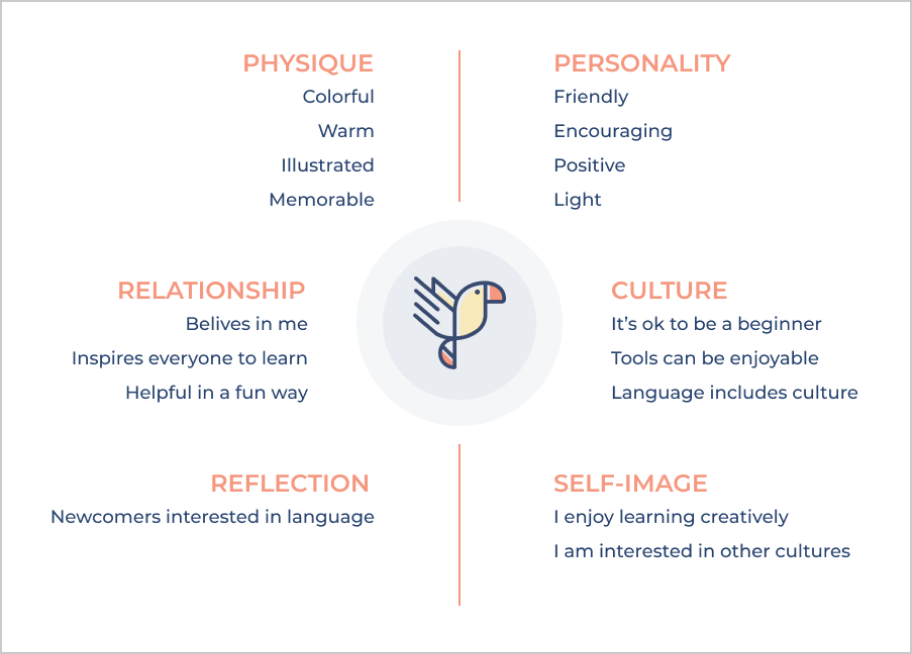
I anchored the visual branding around the printed book, which had illustrations and lots of color (the book file I received had over 100 different colors!).
I wanted to capture the friendly, warm tone in the book, but also brighten some of the colors to create an exciting first impression.
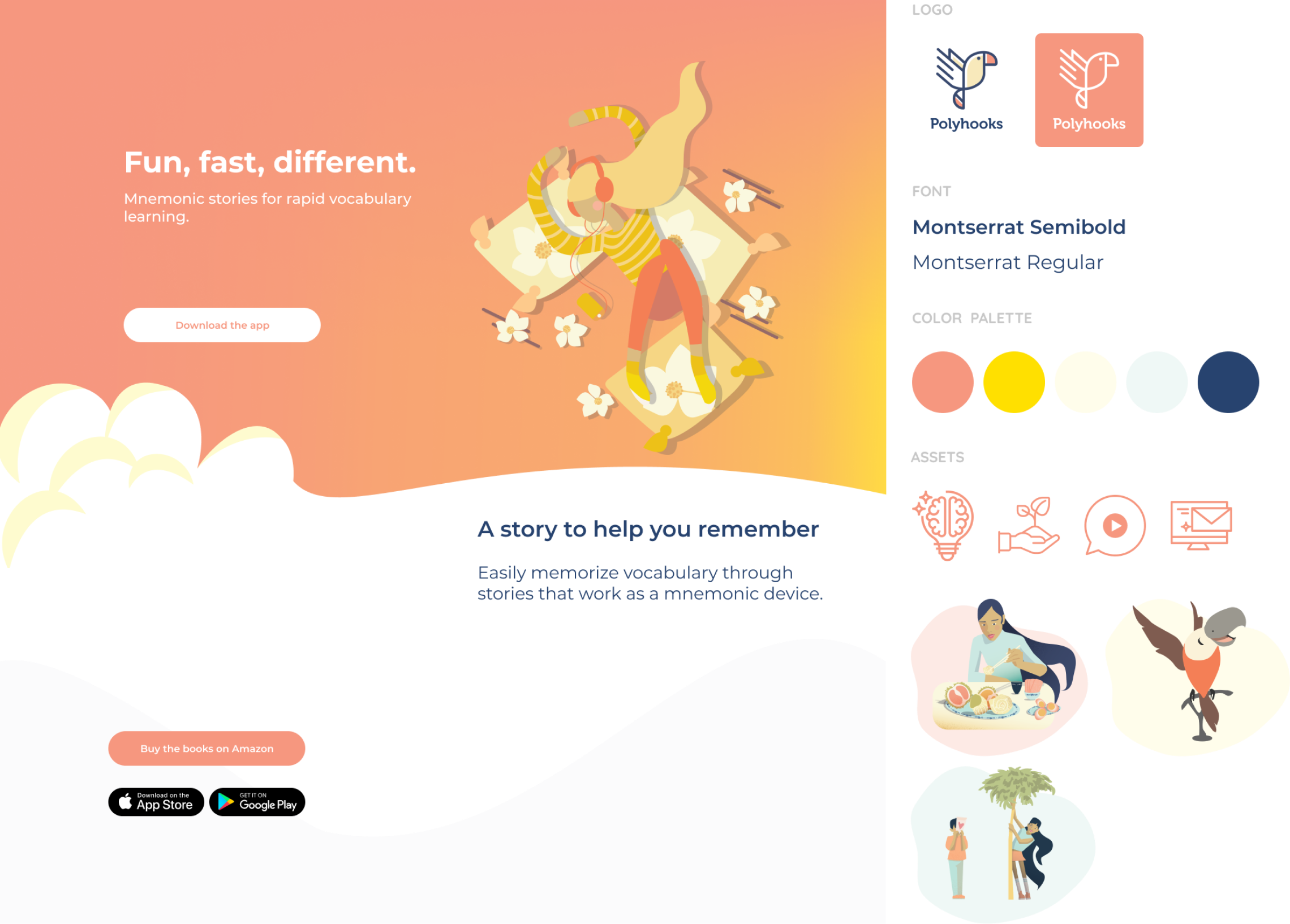
The business goals for the website were straightforward:
In addition to clearly highlighting the value props, I wanted users to be able to see themselves in the pain points.
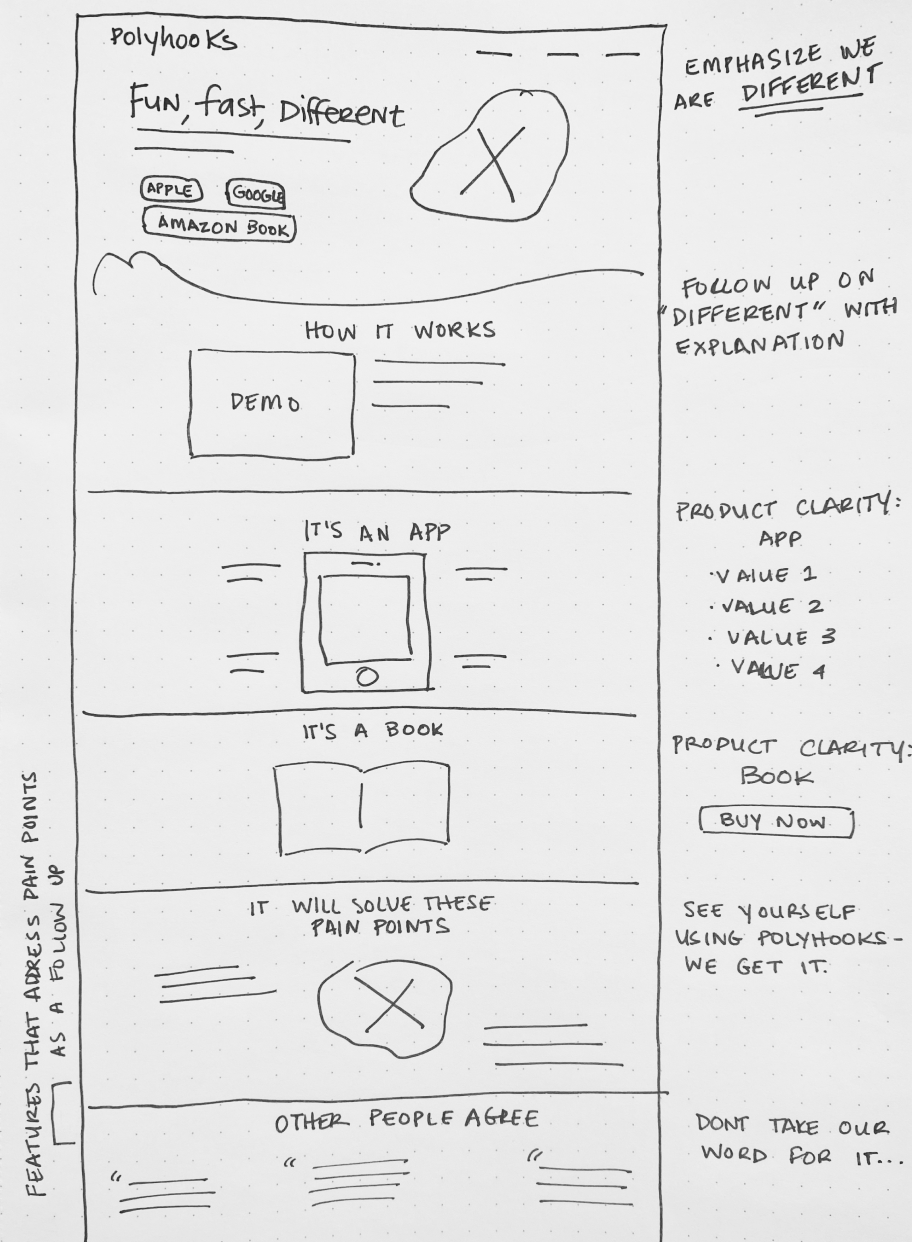
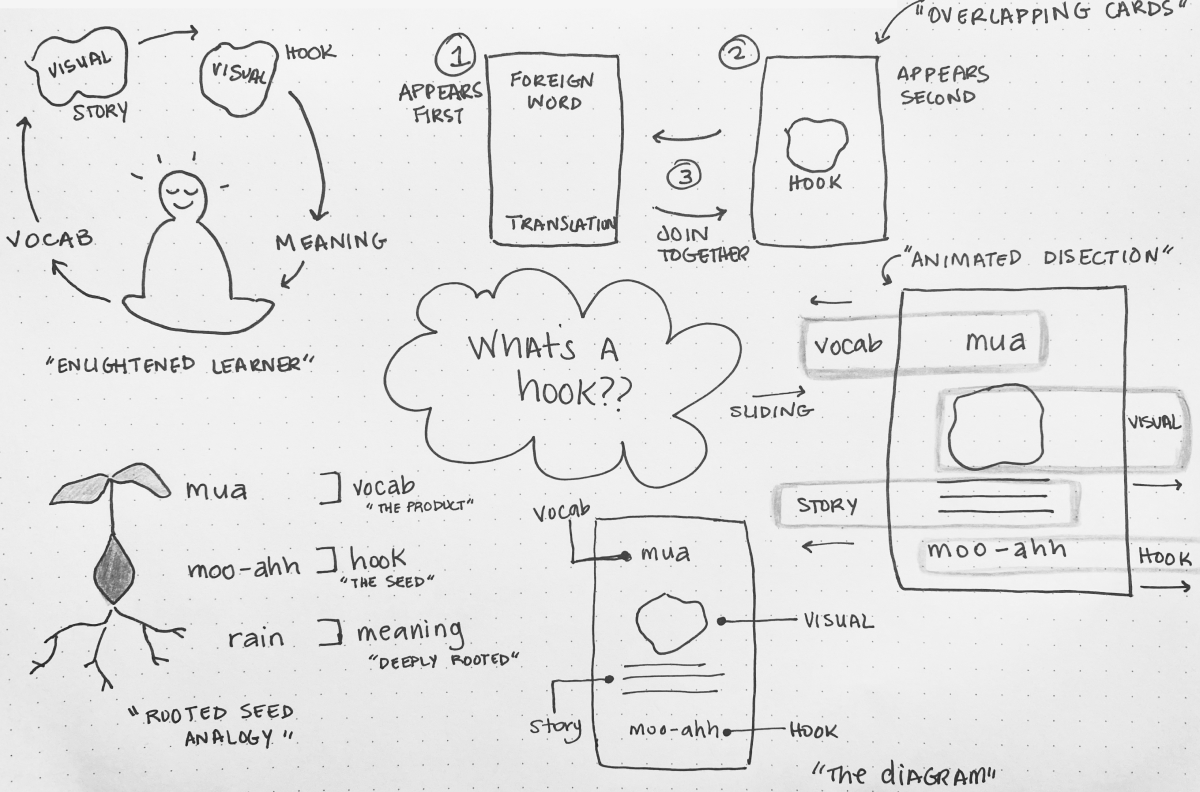
The tricky part was going to be succinctly explaining the Polyhooks method.
We didn’t look like anything else out there. Other than “mnemonic device” we didn’t yet have clear language to describe the “how” of what we do.
I brainstormed like there was no tomorrow. I talked to friends, neighbors, my hairdresser, my dog . . .
After lots of brainstorming and many long showers I arrived at a solution. If Polyhooks used stories to teach vocabulary, why not use storytelling to explain our method?
I developed a scene sequence to illustrate the link between vocab, hook, and definition. I wanted the sequence to feel connected, like the word–hook relationship, but a rotating carousel made the sequence feel like separate steps. 🤔
My solution was to advance the visual story alongside animated text to create a feeling of togetherness through synchronized motion.
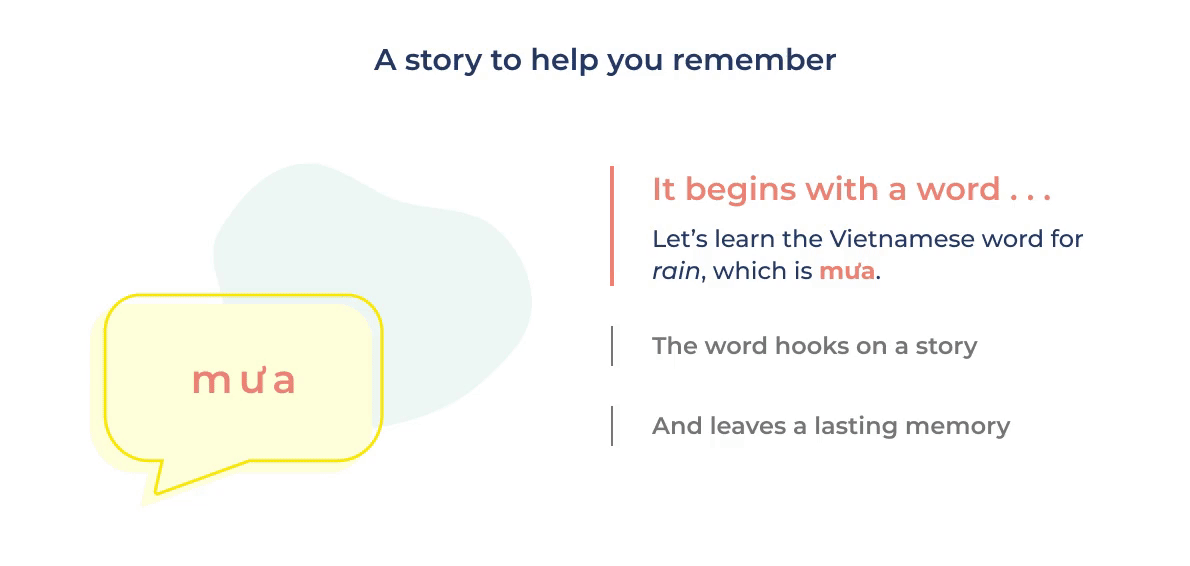
Bringing together the research and branding work, I developed value props, copy, and designs for the website.

Working with a passionate founder who had thought so deeply about the product and vision was a really cool experience. It’s rare to have access to so much knowledge in one place.
At the same time, coming in as a designer proposing change was a delicate undertaking. I think my biggest takeaway was that it’s sometimes more effective to demo new ideas than to verbally try to get buy in. Early inclusion of key stakeholders is core to my belief as a designer, and learning when and how to do this well is a skill I work to refine every day.